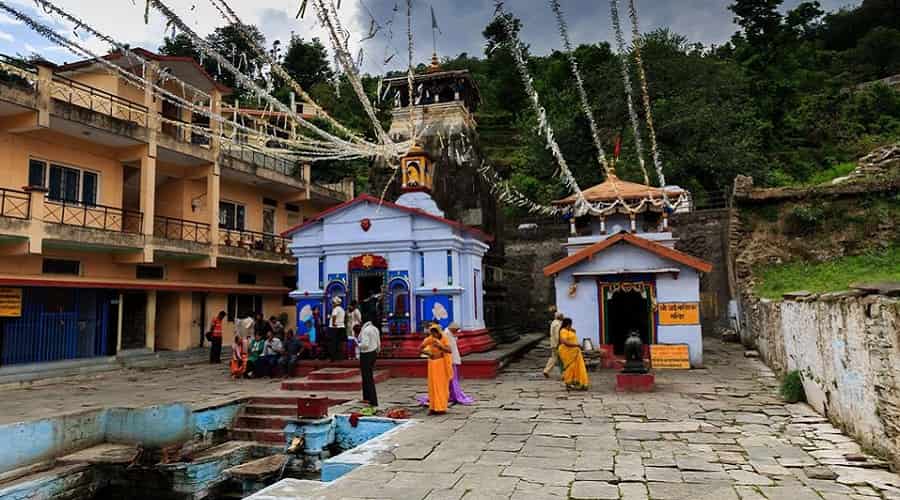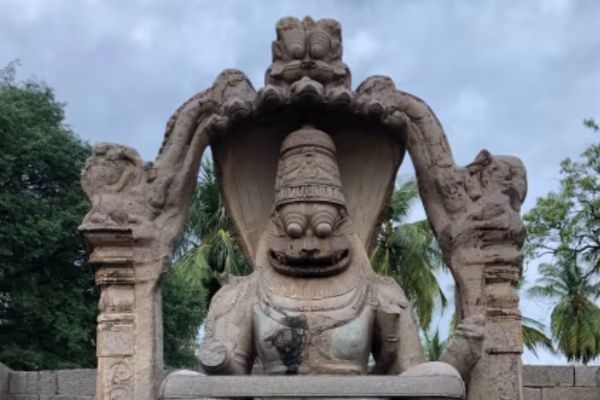Overview
Haridwar is the beginning point of Do Dham Yatra. First stop on this pilgrimage is Kedarnath, Kedarnath Temple is quite famous and one of the most significant shrines the Country. and the pilgrimage ends at Badrinath, and it is also the most important of all four shrines. Set on the banks of Alakananda river, the temple is dedicated to Lord Vishnu. Also remember, following the sequence is believed to be quite important in the Do Dham Yatra. This 06 days Do Dham pilgrimage tour from Dehradun offers sacred darshan of all Do shrine with comfortable accommodations and facilities in between the yatra.
Itinerary
Day 01: HARIDWAR – GUPTKASHI (280kms/09-10 Hrs) Height: 1319 MTS.
- Our driver will pick you up from Haridwar then smooth drive to Guptkashi Enroute you can see the beautiful river Mandakini at Tilwara. The Mandakini River comes from Kedarnath, drive alongside the river to reach Guptakashi, visit Ardh Narishwar Temple in Guptakashi. Check in at the hotel after arrival in Guptakashi. Dinner and overnight stay at Guptakashi.
- Guptakashi: The name Guptkashi means “Hidden Benares. Mythology describes According to devotees, when the Pandav brothers sought a glimpse of Shiva, Shivji first hid at Guptkashi before fleeing higher up the valley to Kedarnath, where the Pandavas eventually received their wish. There are more tangible connections as well the Kedarnath pandas (priests) live in Guptkashi during the winter months, and after the Kedarnath temple closes for the winter, the image of Kedarnath passes through Guptkashi on its way to Ukhimath (across the valley), where it stays for the winter.
Drive to Guptkashi/Phata

Day 02: GUPTKASH/PHATA – KEDARNATH (30kms by road & 16kms Trek one way) Height: 3384 MTS.
- Early morning check out from the hotel and then proceed to Kedarnath. On arrival check in at the hotel. Dinner and overnight stay at Kedarnath.
- By Helicopter: Morning our driver will transfer you your pre-book Helipad. After Back from Kedarnath. Our driver will drop you at hotel for rest.
- By Trek: Morning our driver will drop you at Sonprayag then you have to take local jeep for Gourikund & then your trek starts for kedarnath ji. After darshan you follow same & back to Sonprayag. There is big parking issue so driver will back other place if his contact no. in not working then you have to arrange other taxi or wait for your driver & send the massage any other driver.
- Kedarnath: The Kedarnath shrine, one of the 12 jyotirlingas of Lord Shiva, is a scenic spot situated, against the backdrop of the majestic Kedarnath range. Kedar is another name of Lord Shiva. According to legend, the Pandavas after having Won over the Kaurava in the Kurukshetra war, felt guilty of having killed their own brothers and sought the blessings of Lord Shiva for redemption. He eluded Them repeatedly and while fleeing took refuge at Kedarnath in the form of a bull. On being followed he dived into the ground, leaving his hump on the surface. The Remaining portions of Lord Shiva appeared at four other places and are worshipped there as his manifestations. The arms appeared at Tungnath, the face at Rudranath, the belly at Madhmaheshwar and his locks (hair) with head at Kalpeshwar. Kedarnath and the four above-mentioned shrines are treated as Panchkedar.
Check out from the Hotel
Leave by vehicle for Gourikund
Start the trek from Gourikund to Kedarnath
Pooja and Darshan Kedarnath Temple
Stay at Kedarnath

Day 03: KEDARNATH – PHATA/GUPTKASHI (30kms by road & 16kms Trek one way) Height: 3384 MTS.
- Early morning, after Temple Darshan trek down to Gaurikund. Later, drive back to Guptkashi. Check in Hotel at the Hotel. Dinner and Overnight stay at the hotel.
Trek down for Gaurikund
Visit Ardh Narishwar Temple
Back to Guptkashi
Check in at the hotel

Day 04: GUPTKASHI – JOSHIMATH (100kms/3-4hrs) Height: 6150MTS
- Morning after breakfast, check out from the hotel then proceed to Joshimath. On arrival check in at the hotel. Dinner and overnight stay at hotel.
- Joshimath is situated on the slopes above the confluence of the rivers Alaknanda and Dhauliganga. Of the four ‘Maths’ established by Adi Shankaracharya, Pipalkothi is the winter seat of Badrinath. The idol is brought down to Pipalkothi and installed in the temple for people to worship. There are many other temples in the township. The most important is the temple of Nir Singh with the idol of Lord Vishnu. The left arm of this deity is getting destroyed with time and the popular belief holds that the day the arm completely withers Badrinath valley will cease to exist and the Gods will transfer the residence into the neighboring Niti Valley at Bhavishya Badri.

Day 05: JOSHIMATH – BADRINATH – JOSHIMATH (40kms/1-2hrs) HEIGHT: 3,300 MTS.

- Morning after breakfast, proceed to Badrinath. On arrival, have a bath in the Taptkund and have the Darshan of Badrivishal. Spend some time near the temple. Brahamakapal is significant for Pinddan Shraddh of ancestors (Pitrus). In the evening, return to Joshimath. Dinner and overnight stay at the hotel.
- TAPT KUND: Natural thermal springs on the bank of the river Alaknanda, where it is customary to bathe before entering the Badrinath temple.
- NARAD KUND: A recess in the river near Tapt Kund, forming a pool from where the Badrinath idol was recovered.
- MATA MURTY TEMPLE: Devoted to the mother of Sri Badrinath.
- Other important temples include Sesh Netra Temple, Urvashi Temple, and Charanpaduka.
- MANA VILLAGE: Inhabited by an Indo-Mongolian tribe, it is the last Indian village before Tibet.
- BHIM PUL: A massive rock forming a natural bridge over the roaring Saraswati River, believed to have been placed by Bhim, the second eldest among the five Pandava brothers.
- VYAS GUFA (CAVE): A rock-cave near Mana Village where Veda Vyas is believed to have composed the Mahabharata and the puranic commentaries.
- KESHAV PRAYAG: The confluence of Alaknanda and Saraswati Rivers at Mana Village.
- Badrinath, one of the ‘Ancient Four Dhams,’ is one of the most celebrated pilgrimage spots in the country. Situated at an elevation of 3,133 meters, it is guarded by the two mountain ranges known as Nar & Narayan, with the towering Neelkanth Peak providing a splendid backdrop. The place was once carpeted with wild berries, hence the name “Badri van,” meaning “forest of berries.”
Day 06: KEDARNATH – PHATA/GUPTKASHI (30kms by road & 16kms Trek one way) Height: 3384 MTS.
- Early morning, after Temple Darshan trek down to Gaurikund. Later, drive back to Guptkashi. Check in Hotel at the Hotel. Dinner and Overnight stay at the hotel.
Trek down for Gaurikund
Visit Ardh Narishwar Temple
Back to Guptkashi
Check in at the hotel

